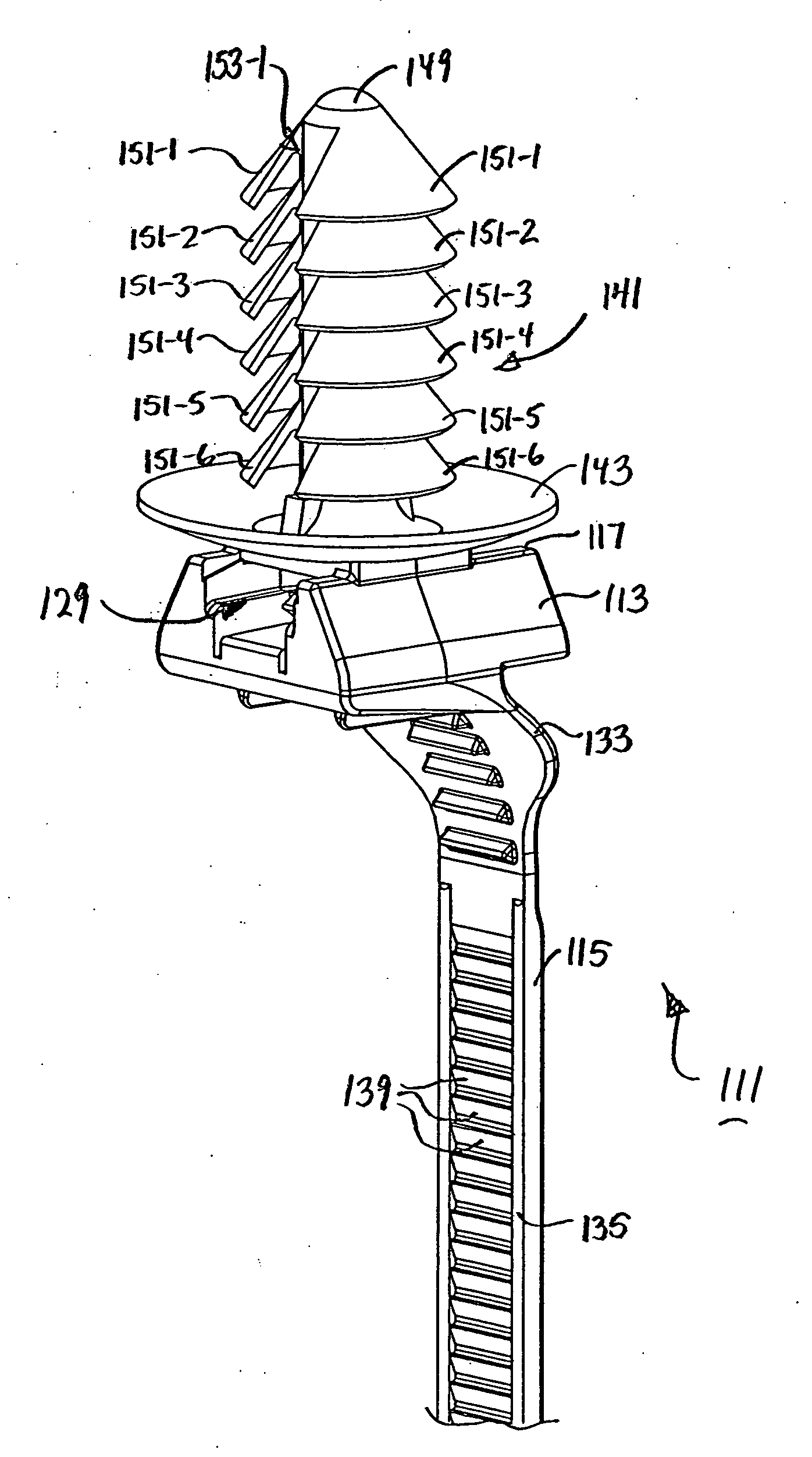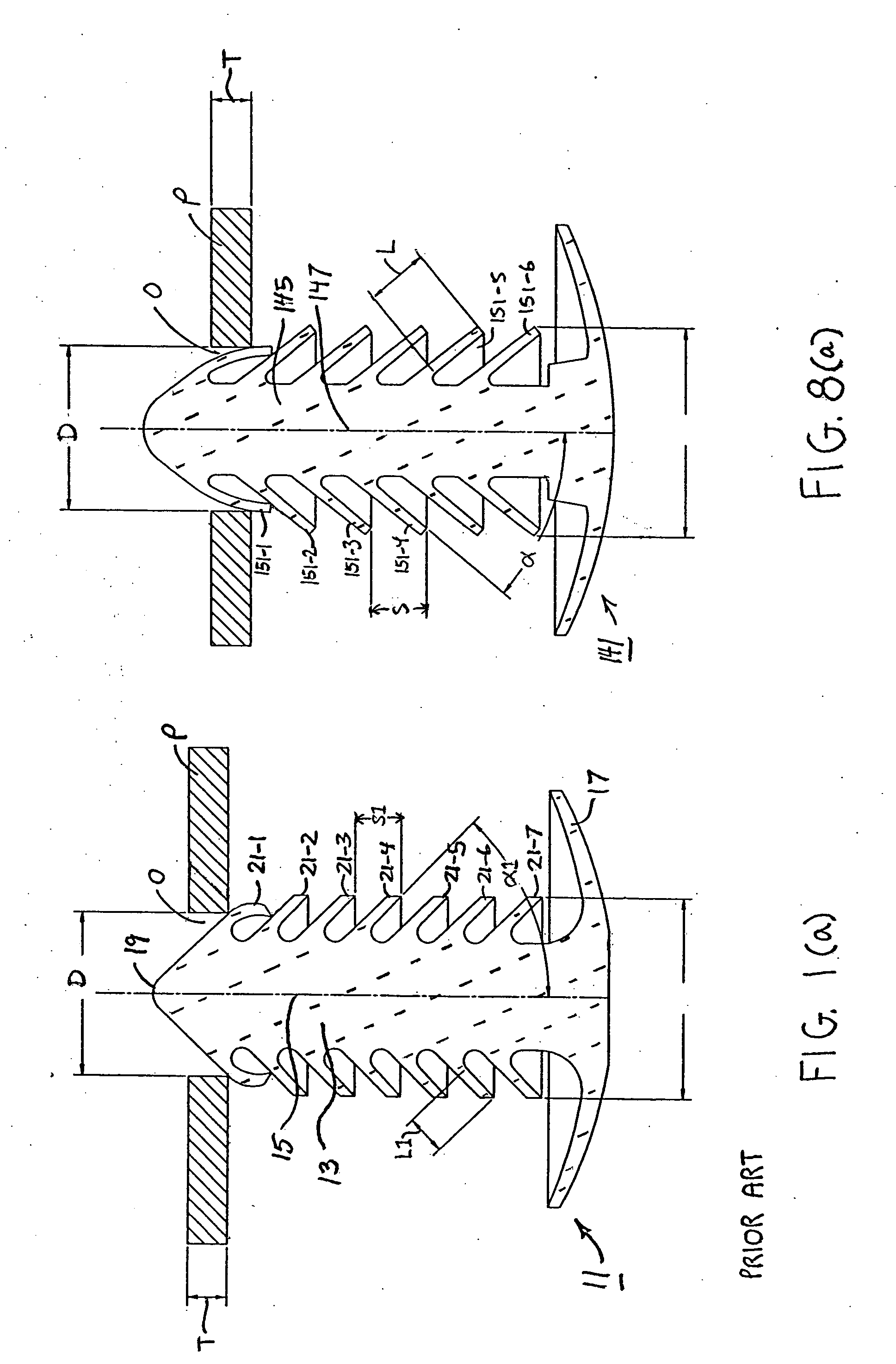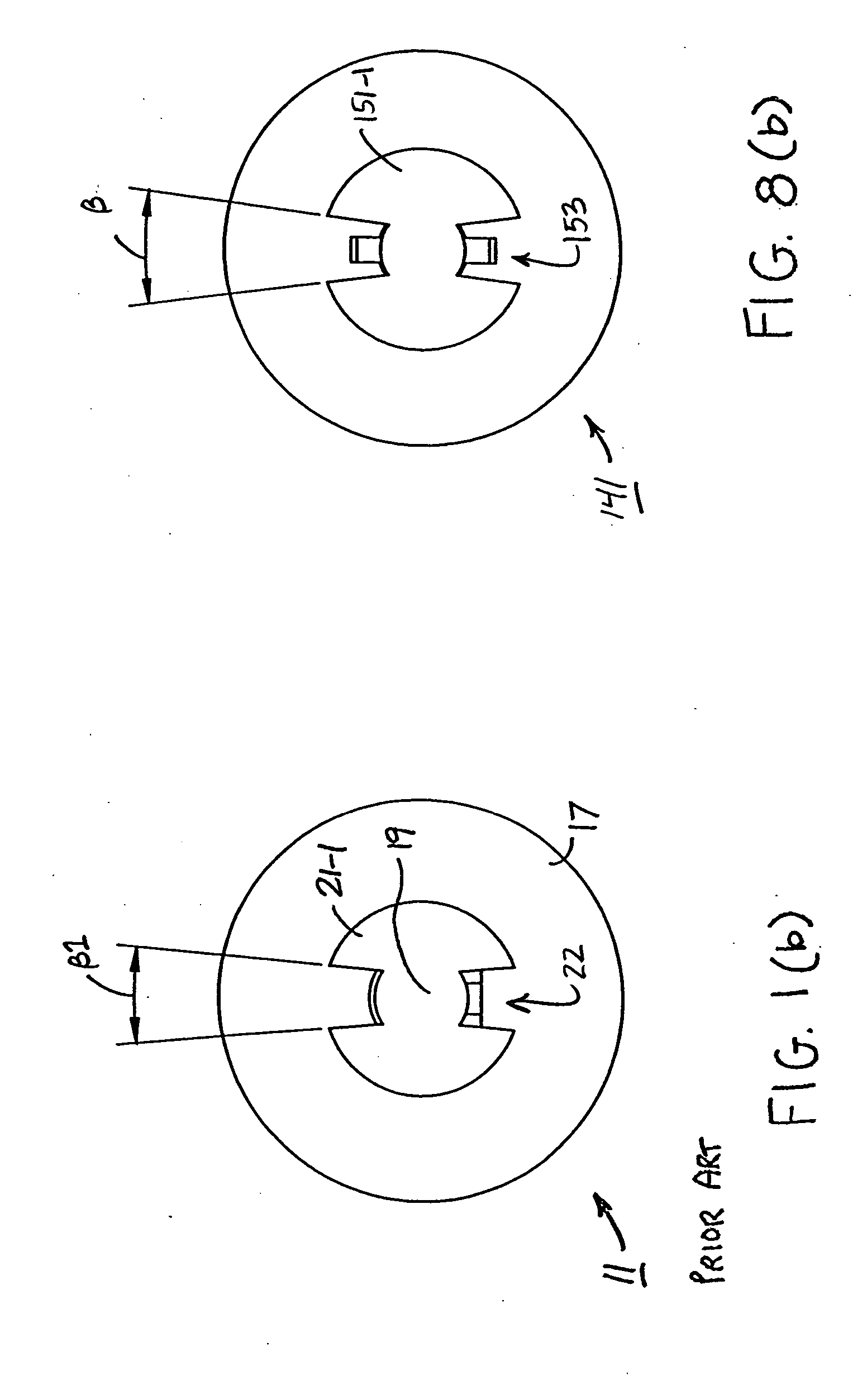Cable tie with fir-tree type fastener
a technology of fir branches and fasteners, applied in the field of tie, can solve the problems of high undesirable and injury to workers, and achieve the effect of convenient use and inexpensive manufacturing
- Summary
- Abstract
- Description
- Claims
- Application Information
AI Technical Summary
Benefits of technology
Problems solved by technology
Method used
Image
Examples
Embodiment Construction
[0035] Referring now to FIGS. 2-5, there is shown a cable tie (also referred to herein simply as a tie) which is constructed according to the teachings of the present invention, the tie being identified generally as reference numeral 111. As one of its potential applications, tie 111 can be used to bundle together a group of wires and, in turn, retain said bundle against an automotive panel.
[0036] Cable tie 111 comprises a locking head 113 and an attached strap 115. Preferably, tie 111 is manufactured of a plastic material, such as nylon, and is formed as a single piece using conventional molding techniques.
[0037] Locking head 113 is generally rectangular in shape and comprises a top wall 117, a bottom wall 119, a front wall 121, a rear wall 123, a first side wall 125 and a second side wall 127. Together, top wall 117, bottom wall 119, front wall 121, rear wall 123, first side wall 125 and second side wall 127 define a strap accepting channel 129 which extends longitudinally throu...
PUM
 Login to View More
Login to View More Abstract
Description
Claims
Application Information
 Login to View More
Login to View More - R&D
- Intellectual Property
- Life Sciences
- Materials
- Tech Scout
- Unparalleled Data Quality
- Higher Quality Content
- 60% Fewer Hallucinations
Browse by: Latest US Patents, China's latest patents, Technical Efficacy Thesaurus, Application Domain, Technology Topic, Popular Technical Reports.
© 2025 PatSnap. All rights reserved.Legal|Privacy policy|Modern Slavery Act Transparency Statement|Sitemap|About US| Contact US: help@patsnap.com



